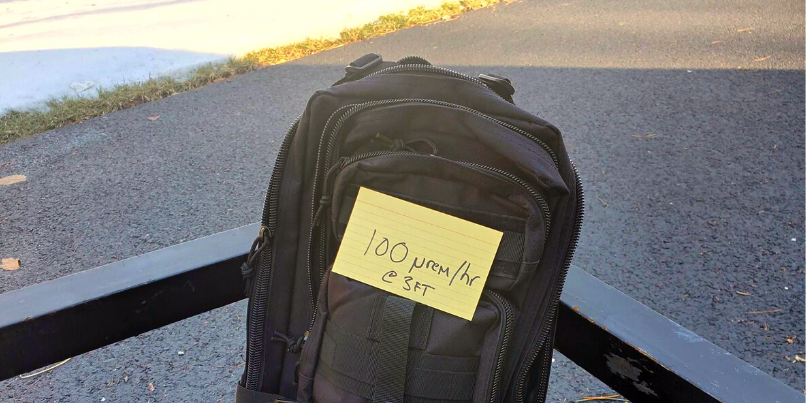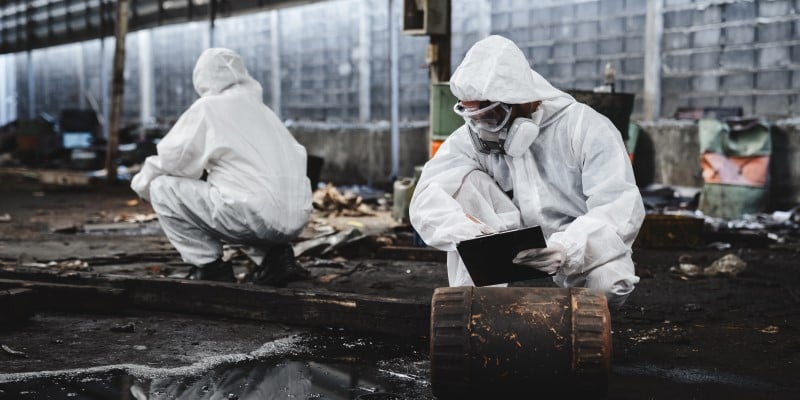
If you’re a first responder, you have probably undergone training with index cards at some point in your career. This tried-and-tested method helps trainers provide information to downrange operators that should initiate a response or action from those operators.
Index (or inject) cards are popular because they’re easy to set up, cost-effective, and disposable. However, they are certainly a case of sacrificing quality for price and ease.
Many trainers find this fact hard to accept. Some say it’s not true at all, and that index cards are the best and option for first responder training. Others aren’t even aware that Real Experience Training simulators are a viable alternative. In response, we’ve created a list of the five reasons index cards are limiting first responder training outcomes:
1. Index cards do not provide a realistic response to radiation hazards
Close your eyes and imagine a real response situation. See any index cards? In a real emergency response, an index card isn’t going to be sitting on top of a backpack which is suspected to be emitting radioactivity.
Sure, instructors know this and accept it as a limitation, but what many don’t realise is just how detrimental it is to a learning outcome.
One meta analysis of simulation training in higher education found that simulations are the most effective way to facilitate learning of complex skills across domains (which can include first response). This analysis highlighted the importance of realistic practice opportunities which include authentic problems related to the professional field.
The problem with inject cards is that they don’t effectively simulate a true response situation. That extra mental load of imagination necessary during training takes focus away from the targeted learning tasks.
2. First responder operator equipment isn’t utilised for proficiency when depending on index cards
An index card is a means to communicate a fake measurement to trigger an action from the trainee and respond to Standard Operating Procedure (SOP) action lines. This means they probably aren’t using all of the functions on their devices that are necessary for them to be proficient during a real situation.
This can pose a serious problem, considering much of first responder training requires kinetic learning and the development of muscle memory, especially in high-stress situations.
Alternatively, Argon’s radiation simulators give operators the opportunity to use the actual, real-world equipment in their training environments. They then develop the muscle memory and competence necessary to operate the equipment they’ll use in true emergency situations.
3. Operators struggle to take index card training seriously
We’ve already mentioned that index cards lack realism, but it’s important to highlight one of the most damaging effects of this: operators struggle to take the training seriously.
As we mentioned before, there is an increased mental load that operators need to take on during index card training: imagination. The extra energy spent pretending that the situation is real not only inhibits the ability to retain information, but also makes it difficult to take the training seriously in the first place.
Responders are highly skilled and generally focused on process-driven, real-world applications. By using index cards, trainers are continually asking them to play pretend with objects that have nothing to do with a true emergency situation.
This can lead to operators simply going through the motions of the training because it’s a requirement, and not because they see it as an integral part of learning and building competence with the key equipment that they’ll actually be using.
4. Index cards don’t offer the full range of realistic radiation responses
This point is specific to radiation training: with index cards, operators lack many procedural options while training. Practising inverse-square law response and ensuring their radiation exposure is As Low as Reasonably Achievable (ALARA) can be problematic and require extra cards with differing measurements, all of which could be misplaced, damaged, or blown away. This, among other things, leads to a lack of consistency between training sessions.
However, with products like Argon’s Radsim GS4 Gamma Simulator, you can simply turn it on and you’re good to go. This electromagnetic “live source”-like simulator enables the development of radiological survey exercises that permit students to experience:
- Dose rate and dose readings that trigger personal safety actions
- The practice of inverse-square law response
- Practice the principles of ALARA
- Consistent readings across instruments, each time the student revisits the same location within the exercise
- The use of point contact sources for alpha/beta contamination
5. Index cards are easily misplaced or damaged
Ever had a set of index cards blow away in the wind right before the training situation is scheduled to start?
As most first response trainers know, inject cards are flimsy. They get misplaced or damaged. A single drop of rain can blur key measurements and ruin the entire training experience.
Sure, they’re inexpensive, but trainers are sacrificing quality for cost when they choose index cards. Alternatively, Real Experience Training ensures a smooth training event at any time, in any place, and under any meteorological condition.
As we’ve detailed, index card training doesn’t offer optimal learning opportunities for first responders. Research shows that simulation environments such as Real Experience Training are key for effective learning.
To uncover more about Real Experience Training, including how electronic simulators are revolutionising first responder training, and which equipment is required for live incident radiation detection, download the free Argon Radiation Safety eBook.







